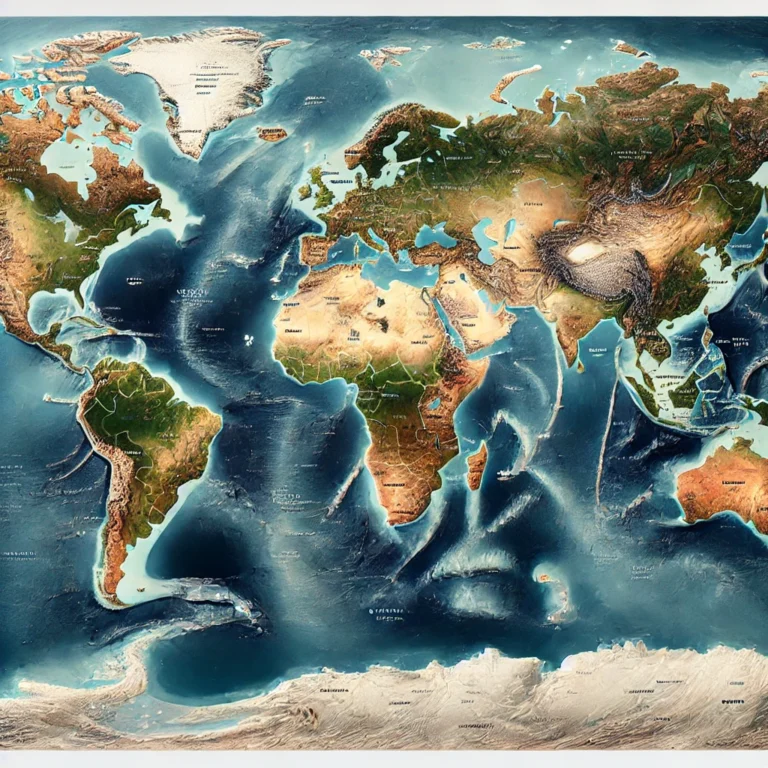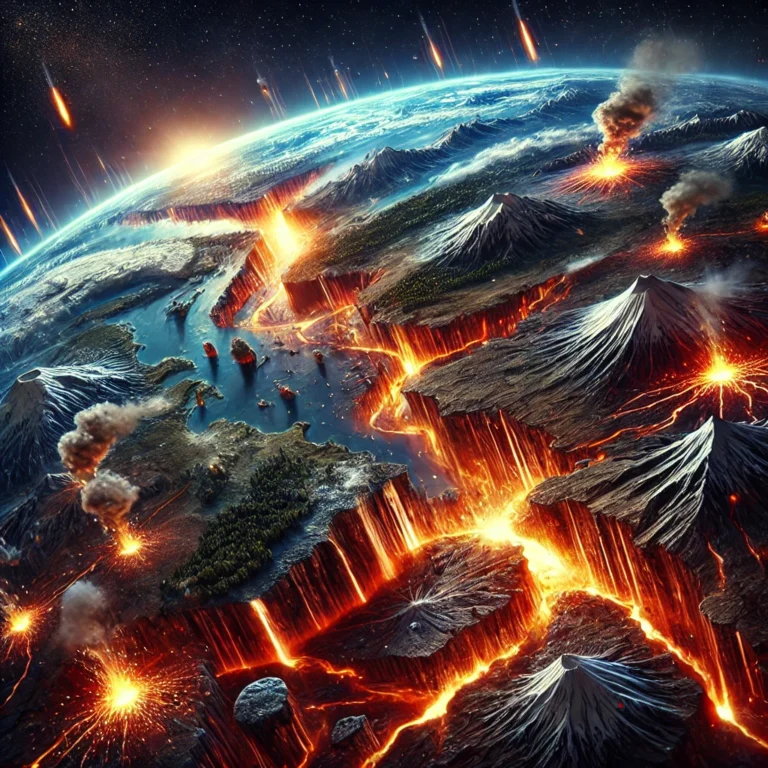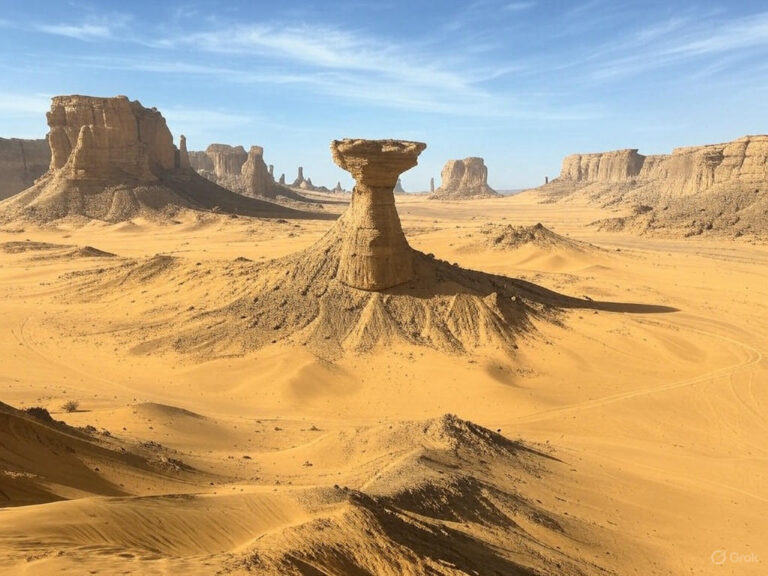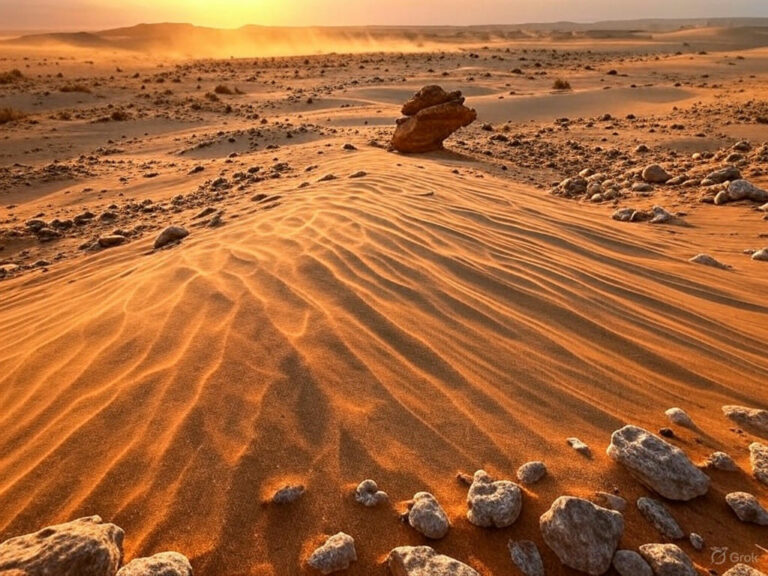Ocean Bottom Relief of Atlantic Ocean
Let’s now talk about the Atlantic Ocean, the second-largest ocean on Earth. Picture an enormous S-shaped water body stretching between the Americas on one side and Europe & Africa on the other. This distinct shape is not just a coincidence—it is a geological fingerprint that tells a fascinating story of how continents were once joined before drifting apart.
An Expanding Ocean
Unlike the Pacific, which is shrinking, the Atlantic is an expanding ocean. The seafloor is spreading at a rate of about 4 cm per year, meaning the gap between the continents is widening over time. Because of this continuous expansion, no new fold mountains have formed along its margins—unlike the towering Andes and Rockies of the Pacific.
A Fisherman’s Paradise
One of the Atlantic’s defining features is its extensive continental shelves, making it one of the richest fishing grounds in the world. These underwater plateaus create ideal conditions for marine life, leading to globally renowned fishing zones such as:
- Grand Bank of Newfoundland (Canada)
- Dogger Bank and Great Fisher Bank (North Sea, Europe)
Marginal Seas and Shelves
Several marginal seas dot the Atlantic, forming important waterways:
- Hudson Bay (Canada)
- Baltic Sea (Northern Europe)
- North Sea (between the UK and mainland Europe)
In the South Atlantic, the shelves are even more expansive, especially between Bahia Blanca (Argentina) and Antarctica. These broad platforms host diverse marine ecosystems and contribute significantly to the fishing industry.
Islands in the Atlantic
While not as densely packed as the Pacific, the Atlantic still has some important islands:
- British Isles (UK and Ireland)
- Iceland (a volcanic hotspot)
- Azores (Portugal)
- Newfoundland (Canada)
The Mid-Oceanic Ridge: The Backbone of the Atlantic
Now, let’s dive beneath the waves to explore the Mid-Atlantic Ridge (MAR), a massive underwater mountain range that splits the Atlantic into two halves—the East and West Atlantic Basins. This ridge is a zone of divergence, where tectonic plates are pulling apart, allowing magma to rise and create new seafloor.
Key sections of the Mid-Atlantic Ridge include:
- Dolphin Rise (North Atlantic) and Challenger Rise (South Atlantic)
- Wyville Thompson Ridge (between Iceland and Scotland)
- Telegraphic Plateau (south of Greenland and Iceland)
- Newfoundland Rise, Azores Rise (North Atlantic)
- Sierra Leone Rise, Para Rise (near Equator)
- Guinea Rise, Walvis Ridge, Rio Grande Rise (South Atlantic)
Among these, Pico Island of Azores is the highest peak, rising above the ocean surface.
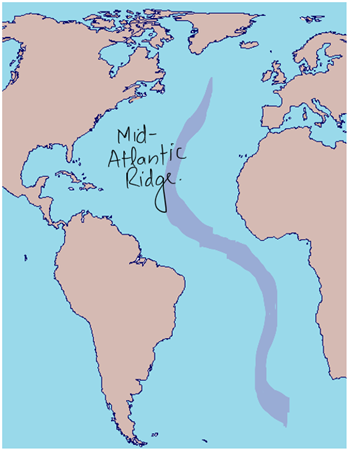
Fracture Zones: The Fault Lines of the Atlantic
The Mid-Atlantic Ridge is not a smooth structure—it is interrupted by fracture zones, which are like scars on the ocean floor. Some of the major ones include:
- Gibbs, Atlantis, Oceanographic, Kane, Vema, and Romanche Fracture Zones.
(You can remember them with the mnemonic: Gibbs At OsaKa with ViRu)
Deep Ocean Basins
The Mid-Atlantic Ridge divides the ocean into major basins, deep depressions that store vast amounts of water. Some key basins include:
- Puerto Rico Basin
- North American Basin
- North Atlantic Basin
- Argentinian Basin
- Walvis Basin
Final Thoughts
Unlike the Pacific’s volatile Ring of Fire, the Atlantic tells a different geological tale—one of slow expansion and steady evolution. It is a growing ocean, where the seafloor continuously renews itself, shaping the world’s continents and influencing marine ecosystems. Whether it’s the rich fishing grounds, volcanic islands, or deep ocean ridges, the Atlantic is a dynamic and ever-changing part of our planet’s geography.


